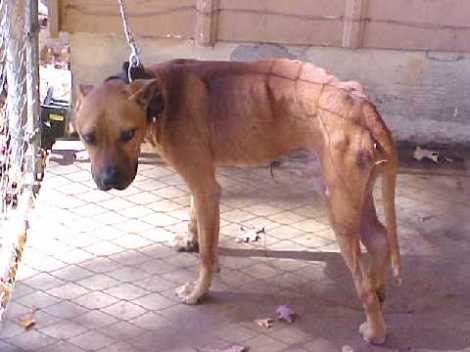Advocacy by nonprofits has played an important role in the most significant social changes throughout U.S. history. Nonprofits may advocate on any side of an issue, and their advocacy and lobbying is thus a fundamental pillar of a democratic society.(Worth, pp, 361-362). The ASPCA (The American Society for the Prevention of Cruelty of Animals) has made it their mission to work with local, state, and federal legislators to help enact meaningful protections for animals.
Dog fighting occurs in every part of the country and in every type of community. “Man’s best friend” may fight to the death in dogfights, often with tens of thousands of dollars at stake. Dog fighters sometimes kill the losing dogs, and even winning dogs may die from their wounds. Police often discover drugs, guns, and even murder in connection with dogfights. Organized, large-scale dog fighting operations have declined in recent years, thanks in part to the ASPCA’s( American Society for the Prevention of Cruelty to Animals) work against dog fighting. Street dog fighting, however, remains a problem in urban areas. Dog owners seeking status or bragging rights stage impromptu fights in back alleys or basements. It is estimated that some 400,000 American’s are engaged in dog fighting professionally, with over 100,000 engaged on a non-professional basis. All 50 states now consider participating in dog fighting to be a felony offense. The ASPCA is working to ensure that canines are safe from this cruel sport.
As a dog owner and lover, this is an issue that has always had great importance to me. As the owner of a dog that has been rescued from the violent and deadly world of dog fighting, I often try to picture what it would be like to live in a world where I was abused, chained, starved, and forced to fight for my life without the ability to cry out for help. These dogs need a voice and someone standing behind them to defend their right to a life free of violence. Even to people who do not particularly care for dogs, the act of dog fighting affects everyone in every community they live in. Dog fighting rings are often involved with other crimes involving drugs and weapons, and engage in illegal gambling, homicide, drug trafficking, money laundering, and corruption of minors. In a Texas home, three intruders bound the wife and children of a well-known pit-bull breeder and killed him for the $100,000 that he had won at a fight. Another infamous breeder planted “directional mines” on his property in an attempt to keep people away; a land surveyor was injured when one of these devices exploded.
2. A springpole- Used to condition a dog for fighting by building up his jaw and neck muscles. Some sort of material suspended from a beam or sturdy tree branch for a dog to bite and hold onto.
6. Fighting pits, often with “scratch lines”, may be constructed out of plywood and measure between 14 and 20 square feet and have walls 2 to 3 feet high. The pit may be created out of other materials, such as chain link fencing or makeshift materials like hay barrels. The diagonal scratch lines are drawn in two opposite corners.
- Support stronger laws. Visit the ASPCA Advocacy Center to keep up to date on dog fighting legislation in your state.
- Alert the media! Your local newspaper and television station are always looking for stories, especially investigative ones—be sure to contact them about the cruelty and dangers of dog fighting.
- Call or write your local law enforcement department and let them know that investigating dog fighting cruelty should be a priority. Dog fighting is a CRIME—and the police MUST investigate these cases.
- Keep your eyes and ears open. If you suspect dog fighting in your own neighborhood, contact the police or your local animal control officer. Provide as much information as you can, such as the date and time you noticed something wrong, the address or location, and what led you to believe there was dog fighting taking place.
- Protect your pets. Dog fighters sometimes steal companion animals to use as bait dogs. Don’t let your animals outside without supervision, and make sure they have proper identification tags and are microchipped.
- Adopt a Pit Bull and let your perfect pooch be an ambassador for the breed! Be sure to read our Pit Bull adoption tips before you start your search.
- Set a good example for others. If you are already the proud parent of a Pit Bull, be sure to always show them the love and good care that they deserve. And always let others know what great companions they make!
- Volunteer! If your local shelter is facing a Pit Bull dilemma, volunteer to help keep adoptable Pit Bulls and Pit mixes mentally and physically fit by exercising them or taking them to obedience classes. You can also lead a chew-toy drive at work to collect rawhides or hard rubber playthings to keep them busy, or help create a fundraiser to support a free sterilization program for Pit Bulls in your local shelter.
- Educate others in your community about the horrors of dog fighting and start a neighborhood watch program.
- Teach your children. Do your kids have questions about dog fighting? Visit our children’s website, ASPCAKids
If you think someone you know is abusing animals, you can help. The best thing you can do is report cruelty.
Tennessee anti-cruelty provisions define “animal” as a domesticated living creature or a wild creature previously captured. A person commits the offense of cruelty to animals (a Class A misdemeanor) if he or she intentionally or knowingly tortures, maims or grossly overworks an animal; fails unreasonably to provide necessary food, water, care or shelter for an animal in the person’s custody; abandons unreasonably an animal in the person’s custody; transports or confines an animal in a cruel manner; or inflicts burns, cuts, lacerations, or other injuries or pain. Animal fighting is also prohibited under this section, with dog fighting incurring a felony penalty and cockfighting resulting in a misdemeanor in most cases. A person commits aggravated cruelty (a Class E felony) to animals when, with aggravated cruelty and with no justifiable purpose, he or she intentionally kills or intentionally causes serious physical injury to a companion animal. Exclusions include animal farming, research, veterinary practices, hunting, trapping, “dispatching” rabid animals or wild animals on one’s property, among other things
If you run into trouble finding the correct agency to contact, you should call or visit your local police department and ask for their help in enforcing the law. If your local police department is unable to assist, ask your local shelter or animal control agency for advice. To find contact information for your local shelter, visit the ASPCA’s searchable database of nearly 5,000 organizations.
References:
Worth, Michael, J. (2012) Nonprofit Management, Principles and Practice (Second Edition) (pp. 353, 361, 362). the George Washington University
Ten ways to help end dog fighting Web. April 13, 2013 http://www.aspca.org/fight-animal-cruelty/dog-fighting/ten-ways-to-help-end-dog-fighting.aspx
http://www.animallaw.info/statutes/statestatutes/stustnset.htm
Be their Voice – Tina Suppinger Web. April 13,2013 http://anti-dogfightingcampaign.blogspot.com/

